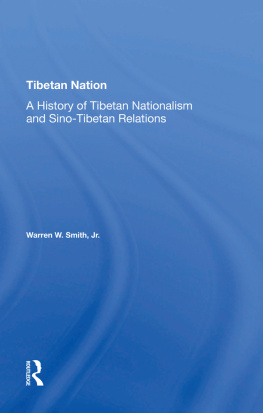
Tibetan Ritual

Tibetan Ritual
EDITED BY JOSE IGNACIO CABEZON






Contents
viiJose Ignacio CabezonNicolas SihleSamten G. KarmayRobert Mayer and Cathy CantwellYael BentorIrmgard MengeleJames GentryBryan J. CuevasMarc des JardinsVesna WallaceJared LindahlFrancoise Pommaret 263 291

Contributors
Yael Bentor is a Senior Lecturer in the Department of Indian Studies at the Hebrew University of Jerusalem. She is the author of a number of books and articles on the theory and practice of Tantra, most recently "Do `The Tantras Embody What The Practitioners Actually Do'?" (in Contributions to the Study of Tibetan Literature, 2008), and "Can Women Attain Enlightenment Through Vajrayana Practices" (in Karmic Passages: Israeli Scholarship on India, 2009). Currently, she is working on a book on the creation stage of the Guhyasamaja.
Cathy Cantwell and Robert Mayer are Research Officers and Members of the Buddhist Studies Unit of the Oriental Institute, University of Oxford, and Senior Researchers at the University of Cardiff. They have coauthored two books: The Kilaya Nirvana Tantra and the Vajra Wrath Tantra: Two Texts from the Ancient Tantra Collection (2007) and Early Tibetan Documents on Phur pa from Dunhuang (2009). Their current research focuses on the Tabzhag (Thabs zhags) or Noose of Methods Tantra, on the early Bon and Buddhist traditions of the deity Purpa (Dagger), and (together with Professor Geoffrey Samuel) on a twentieth-century ritual cycle of the Dujom tradition.
Bryan J. Cuevas is Associate Professor of Buddhist and Tibetan Studies in the Department of Religion at Florida State University. He is the author of The Hidden History of the Tibetan Book of the Dead (2003) and Travels in the Netherworld: Buddhist Popular Narratives of Death and the Afterlife in Tibet (2008), and is the editor, with Jacqueline I. Stone, of The Buddhist Dead: Practices, Discourses, Representations (2007). He is currently working on a study of Tibetan sorcery and the politics of war magic from the sixteenth to eighteenth centuries.
J. F. Marc des Jardins is Assistant Professor of the Religions of China and Tibet in the Department of Religion of Concordia University in Montreal. He specializes on the Tibetan Bon religion and the practice of religion along the Sino-Tibetan frontiers. He has been engaged in field-based research in Tibetan territories within the PRC since 1991. He not only studies Bon textual material, but also rituals and other religious practices in contemporary settings.
James Gentry is a doctoral candidate in the Committee on the Study of Religion at Harvard University. He is working on a dissertation on the life and times of Sogdogpa Lodro Gyaltsen (Sog bzlog pa Blo gros rgyal mtshan), focusing on his memoir, the History of How the Mongols Were Turned Back (Sog bzlog bgyis tshul gyi lo rgyus). He is the author of "Historical Skepticism in `Pre-modern' Tibet: the Contested Historicity of Traditional Padmasambhava Narratives," in New Perspectives on Tibetan Traditionality, Columbia University Press (2009).
Jared Lindahl has completed his MA in Religious Studies from the University of California Santa Barbara and is presently a doctoral candidate at that same institution. He did field research on sacred geography in Mongolia in 2004. Lindahl is currently working on a doctoral dissertation focusing on the doctrine of light and use of light imagery in Tibetan Buddhism and early Christianity.
Irmgard Mengele is a research scholar in the Religious Studies Department at the University of California Santa Barbara. She is the author of dGe-`dun- chos- phel: A Biography of the 20th-Century Tibetan Scholar (1999) and The Life and Art of the Tenth Karma pa Chos-dbyings-rdo-rje (1604-1674): A Biography of a Great Tibetan Lama and Artist of the Turbulent Seventeenth Century (forthcoming). Currently she is working on a project on the theory and practice of healing, medicine, and longevity in Indo-Tibetan Buddhism.
Francoise Pommaret is Directeur de recherche at the Centre National de la Recherche Scientifique, Paris, and advisor to the Institute of Language and Cultural Studies, Royal University of Bhutan. She has authored Tibet, A Wounded Civilization (2005) and has contributed to as well as edited Bhutan: Mountain Fortress of the Gods (2005), Lhasa in the 17th century: The Capital of the Dalai-Lamas (2005), and Bhutan: Tradition and Change (2007 with J. Ardussi). She works on the sociopolitical significance of rituals and their evolution.
Samten Karmay is Directeur de recherche emeriate at the Centre National de la Recherche Scientifique, Paris. He is the author of The Great Perfection, A Meditative and Philosophical Teaching of Tibetan Buddhism (1988, reprint 2007); Secret Visions of the Fifth Dalai Lama (1988, reprint 1998); and the two-volume The Arrow and the Spindle, Studies in History, Myths, Rituals and Beliefs in Tibet (1998 and 2005). Currently he is working on the Dukula, the autobiography of the Fifth Dalai Lama.
Nicolas Sihle is Assistant Professor in the Department of Anthropology at the University of Virginia and Associated Member of the Laboratory "Milieux, Societes et Cultures en Himalaya" of the CNRS (France). His work focuses, from an anthropological perspective, on Tibet and the Himalayas, on Tibetan religion in particular, and more generally on the comparative study of Buddhist societies, as well as on theories of ritual and religion. He is completing a book entitled Rituals of Power and Violence: Tantric Buddhism in the Tibetan Himalayas.
Vesna Wallace is Professor in the Department of Religious Studies at the University of California, Santa Barbara. She is author of The Inner Kdlacakratantra: A Buddhist Tantric View of the Individual, and has published several books of translation from Sanskrit, Tibetan, and Mongolian. She has also authored a series of articles on esoteric Buddhism and produced four documentary films on Mongolia. Vesna Wallace has been conducting annual field research in Mongolia on the revival of Mongolian Buddhism since 2000, research that will result in her new volume on contemporary Buddhism in Mongolia.
Tibetan Ritual

Introduction

Next page



















